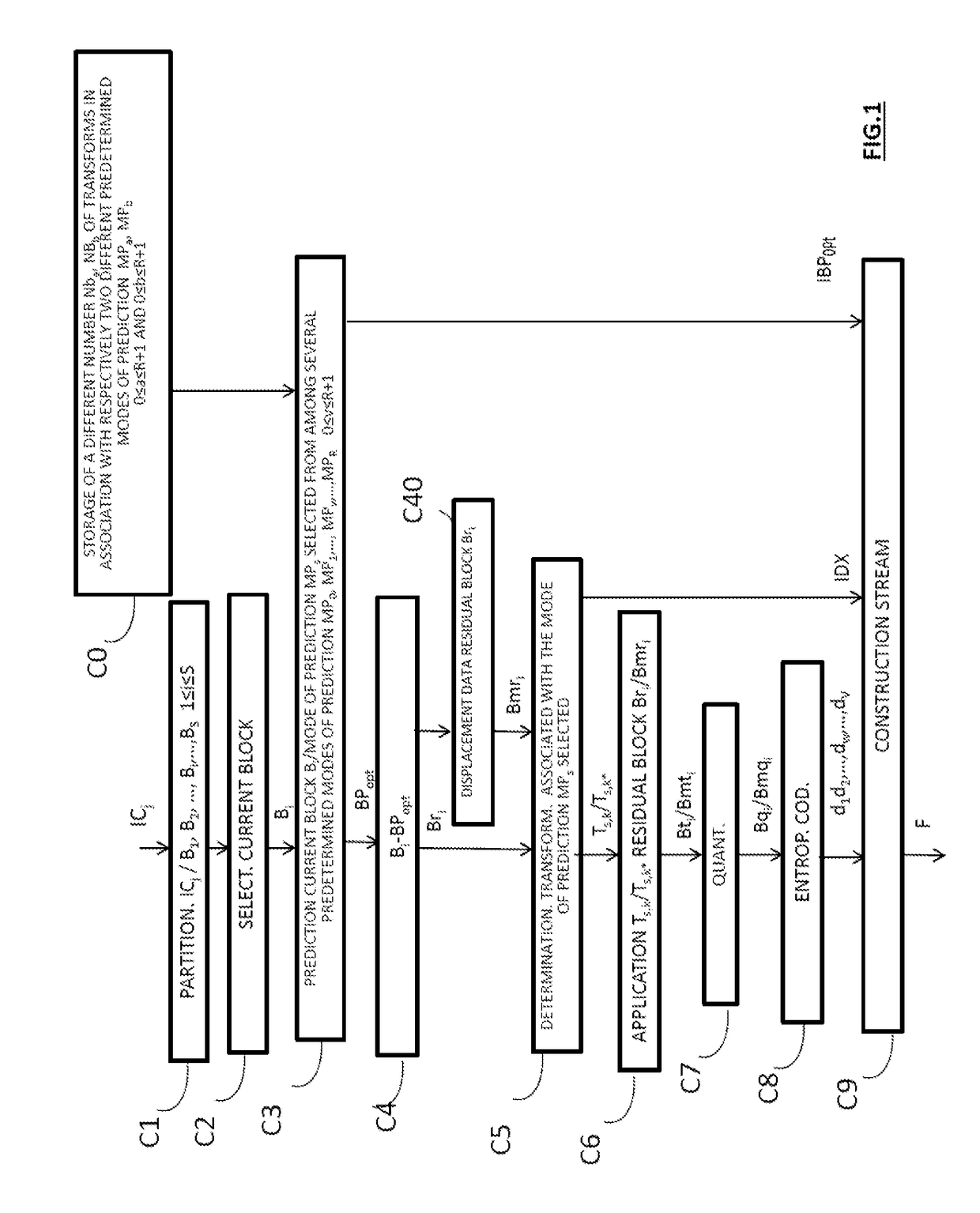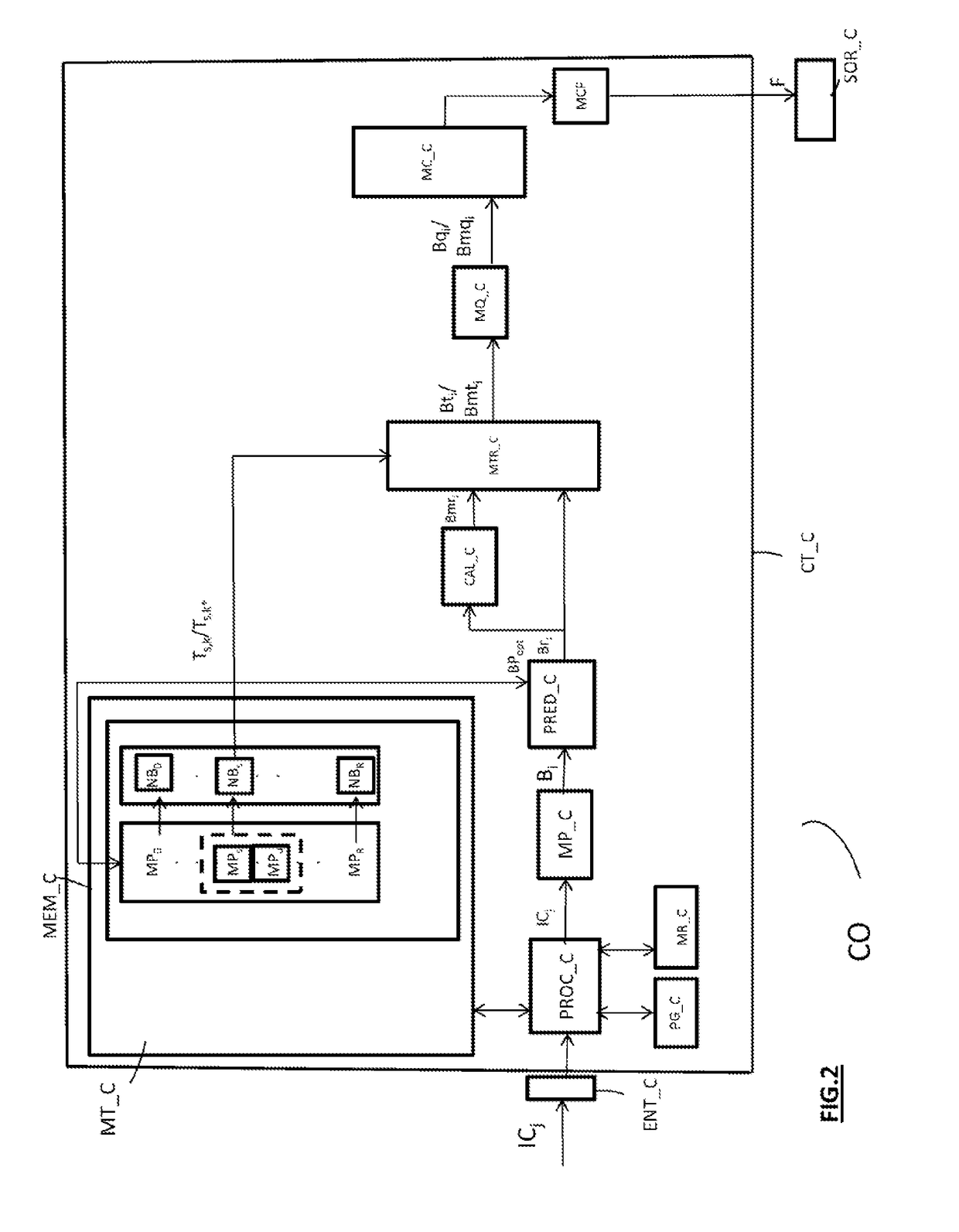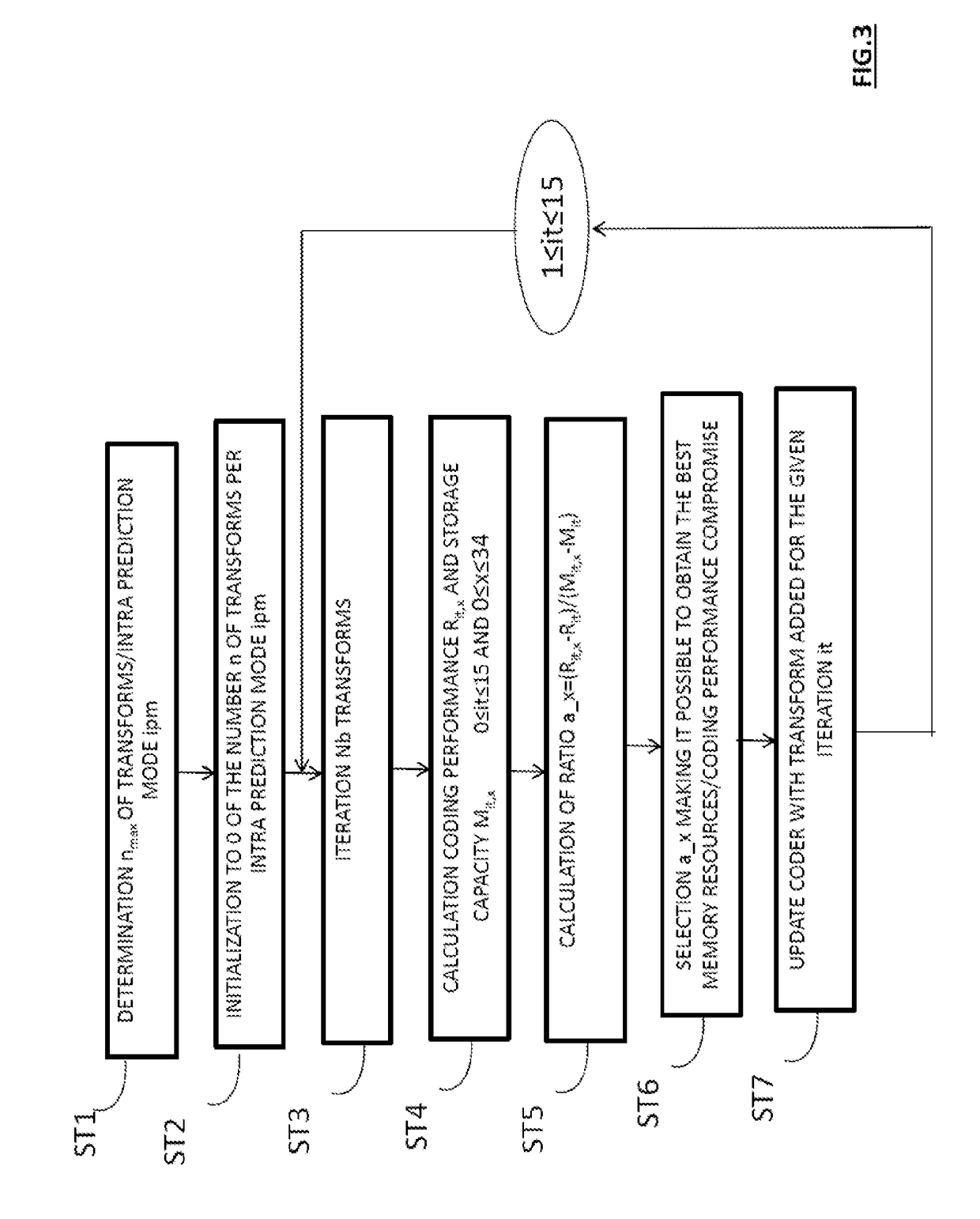Method of coding and decoding images, device for coding and decoding images and computer programmes corresponding thereto
- Summary
- Abstract
- Description
- Claims
- Application Information
AI Technical Summary
Benefits of technology
Problems solved by technology
Method used
Image
Examples
first embodiment
[0355]In the same manner as on coding, with reference to FIGS. 3 to 8, the decoding method implements, according to the invention, a method for determining the number of transforms for each predetermined mode of prediction, in the case of an HEVC decoding of Intra type.
[0356]An embodiment of the invention implemented in the case of an HEVC decoding of Intra type, and in which the set of transforms which is associated with a mode of intra prediction determined in the course of step D3 of FIG. 11 is stored beforehand in association with at least one other mode of prediction of said plurality of predetermined modes of prediction, will now be described with reference to FIGS. 3, 6A, 6B, 7 to 11.
[0357]In this example, on completion of step D3 of FIG. 11, the optimal predictor block BPopt obtained is associated with an optimal direction of Intra prediction which is for example the direction DPI22.
[0358]In accordance with the present embodiment, the transform (if unique) or the set of tran...
second embodiment
[0376] a type of data displacement is a mirror, inverse to that performed on coding, namely an exchange of the columns or rows of the current decoded modified residual block BDmri. Each datum considered in the current decoded modified residual block BDmri is thus displaced inside the latter, while preserving its closest neighbors.
third embodiment
[0377] a type of data displacement is a combination of the inverse transposition and of the inverse mirror, that is to say:[0378]either the application of a displacement of inverse transposition type followed by the application of a displacement of inverse mirror type to the data of the current decoded modified residual block BDmri,[0379]or the application of a displacement of inverse mirror type followed by the application of a displacement of inverse transposition type to the data of the current decoded modified residual block BDmri.
[0380]Furthermore, according to another embodiment of the invention, the type of data displacement in the current decoded modified residual block BDmri is dependent on the mode of prediction MPs determined in the aforementioned step D3.
[0381]In a manner corresponding to the various types of displacement implemented on coding, such as are represented in FIG. 8, there also exist, on decoding, eight different possible types of displacement numbered from 0...
PUM
 Login to View More
Login to View More Abstract
Description
Claims
Application Information
 Login to View More
Login to View More - R&D
- Intellectual Property
- Life Sciences
- Materials
- Tech Scout
- Unparalleled Data Quality
- Higher Quality Content
- 60% Fewer Hallucinations
Browse by: Latest US Patents, China's latest patents, Technical Efficacy Thesaurus, Application Domain, Technology Topic, Popular Technical Reports.
© 2025 PatSnap. All rights reserved.Legal|Privacy policy|Modern Slavery Act Transparency Statement|Sitemap|About US| Contact US: help@patsnap.com



